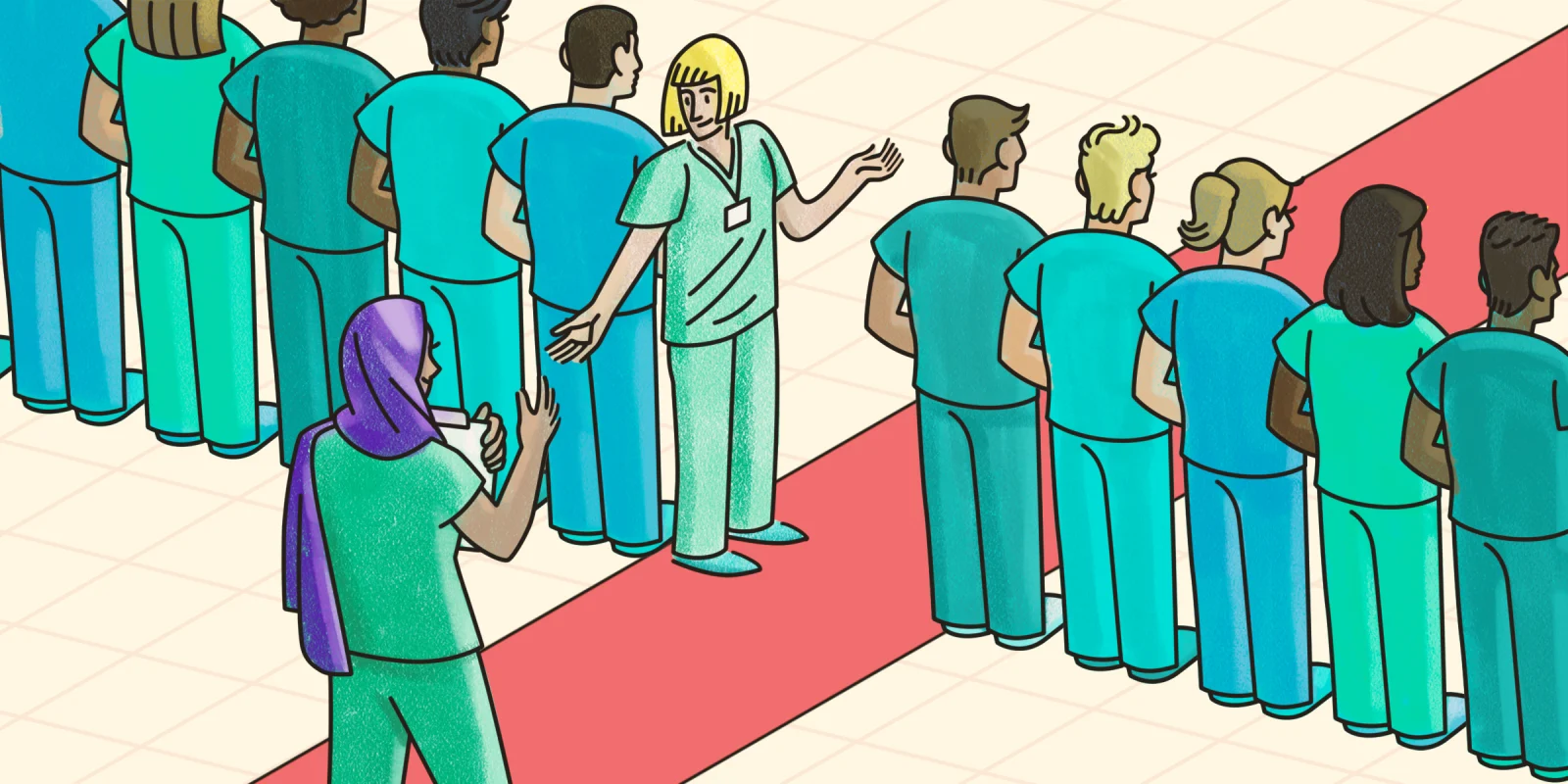“What are the acute indications for dialysis in adults with acute kidney injury?”
The question, coming from my senior resident, caught me off guard. After bedside rounds, our team had been taking a break prior to going to the regular noon educational conference and I was doing a little bit of studying on my laptop for my third-year internal medicine shelf exam.
I thought for a moment — there was a mnemonic for this that I learned a few months ago but it was escaping me. Slightly flustered, but concentrating, I thought of the elderly patient we had on our service who we transferred to the medical ICU earlier that morning. Her husband thought she was more confused and incoherent today, and her labs this morning showed very high blood urea nitrogen levels.
“One indication is if we are worried the patient might have a uremic encephalopathy, like Mrs. Sartori may have,” I responded.
With an almost bored expression, the resident replied, “Yeah, that’s why she was transferred to the ICU and out of our hair. One less discharge summary to eventually do, a win if you ask me. Anyway, that was one indication. What else?”
I racked my brain and rattled off the acronym I suddenly remembered: AEIOU. “Acidosis, electrolyte disturbances, drug ingestions, fluid overload, and uremia.”
“Good, remember that for when the attending asks you tomorrow on rounds.” Seemingly satisfied, the resident turned away from me and snickered to the other residents, “That’s enough teaching for today. Let’s get lunch and head to conference.”
Puzzled at the idea that the resident called this brief two minutes “teaching,” I inwardly shook my head but followed suit and left to get lunch.
Reflecting on this encounter and many similar ones in the years since has had me wondering: What exactly did I learn from them as a medical student? And what would I change now that I am a resident myself, regularly working with medical students? I may or may not remember the factoid or acronym as well now, but I do remember some lessons I continue to carry with me as I go further in my training and my own teaching journey.
First, medical students are incredibly observant. They sense team dynamics and pick up on the way health professionals interact with each other and with patients, especially as they are not yet so entrenched within the workings of medicine so as to be easily detached from the patient’s perspective. For instance, they notice the difference in attitudes toward patients that may need more assistance and effort from clinicians. These are also often the most vulnerable patients — for example, those that come from vastly different cultures, speak a different language, those suffering from substance use or psychiatric disorders. From these exchanges, they learn what mannerisms, attitudes, and habits to cultivate in themselves as they graduate and become physicians themselves. It’s our collective responsibility as health care professionals, then, to encourage curiosity, inquisitiveness, and compassion in our medical students over modeling paternalistic, jaded, or judgmental mannerisms. As a resident now, on the other hand, I have increasingly realized how challenging this can be. Medicine can be extremely demanding and exhausting, and seemingly endless lists of tasks can easily take priority over learning (for ourselves or for our students) if we don’t stay intentional.
Second, when medical students are on rotation, they are juggling new responsibilities and expectations while building on their knowledge of disease management, all the while switching rotations every few weeks to do it all over again. We all remember the struggle of adjusting to 12-hour days at the hospital, night shifts, or 24-hour call for the first time, while simultaneously studying for the end of rotation exam. It’s difficult now, even without an exam hanging over my head. My favorite residents to work with in medical school were those that were straightforward with what they expected of me and included me in patient care beyond basic daily presentations, who didn’t just expect me to learn through random pimping. With that in mind now, I try to remember how valuable my medical students’ time is. No matter how busy it gets, I try to include medical students in patient care after rounds and build in time for teaching that is helpful for them — for more than just two minutes. This could be done by connecting medical concepts to patients they are taking care of, building concrete manageable goals while they are on rotation, and giving live feedback when appropriate for presentations.
But medicine is not just learned through mnemonics and rounds. The incredible difference between the preclinical and clinical years of medical school is the opportunity to have a tangible reason for improving your knowledge of medicine — the patient sitting in front of you. Gone are the days where the abstract concept of treating childhood leukemia displays itself on a PowerPoint slide. Now there is a worried family who is asking for answers for whether their child’s life could be in danger. How does one approach such difficult conversations? Showing medical students, in the appropriate scenarios, how to have those conversations — giving bad news or building rapport with family — is crucial to them practicing good medicine themselves one day.
In other words, there is a lot to learn about the physician’s role beyond clinical practice guidelines, management options, and treatment regimens. Observing an ob/gyn resident counsel a young woman on an unwanted pregnancy during my ob/gyn clerkship taught me that being compassionate and a good listener is sometimes what a patient needs more than any answer I could give through regurgitating clinical guidelines. I try to give the advice that ob/gyn resident gave me to the students I work with now: Taking the extra minute to learn about the person — not just the patient — sitting in front of you can help you learn what values are important to them and save them from unnecessary suffering.
As a resident looking back on my experiences as a clinical medical student, I see a little bit of myself in many of the residents that taught me: a fine mix of fulfillment in my interactions with pediatric patients, a sense of awe for all the knowledge gained (and still being learned!) in the past few years, and many a time being stretched to the thinnest point of patience and exhaustion. There are days that feel like months, and months that pass by like days in residency. But every month, a new group of medical students join us in the hospital and in the clinic. While many of them won’t pursue pediatrics, hopefully all of them want to be good physicians one day. Let’s try to take the small opportunities we can to help them become even better ones.
What do you find as the best quality in a teacher of medicine? Shout out a great teacher or mentor in the comments.
Dr. Zahur Fatima Sallman is a resident physician in Pediatrics at Children’s Hospital of Michigan. She is a graduate of the University of Maryland School of Medicine. She loves acrylic painting, pizza making with her husband, and considers herself an amateur carpenter. Dr. Sallman is a 2022–2023 Doximity Op-Med Fellow.
All names and identifying information have been modified to protect patient privacy.
Illustration by April Brust and Jennifer Bogartz







